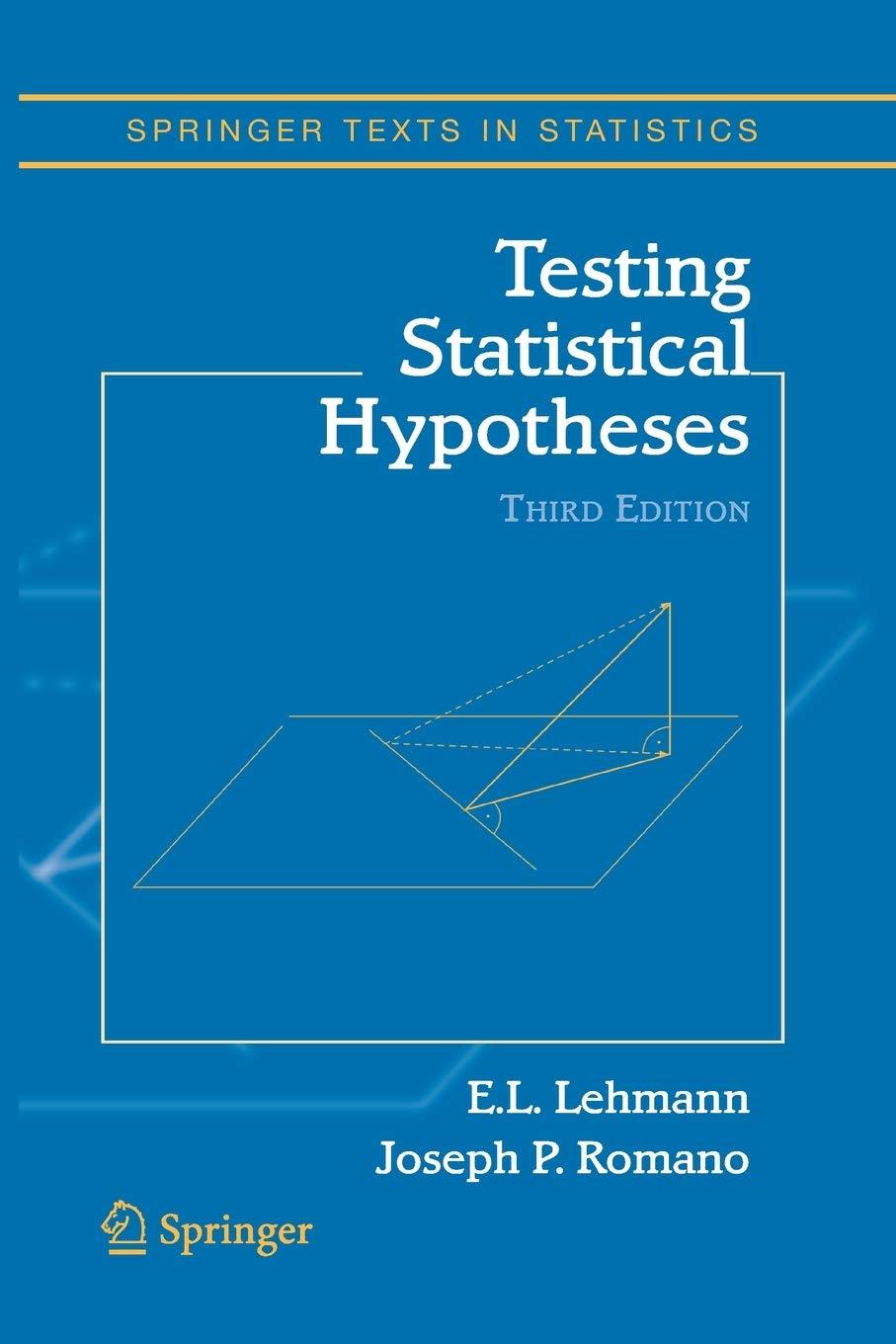Comparison of two designs. Under the assumptions made at the beginning of Section 12, one has the
Question:
Comparison of two designs. Under the assumptions made at the beginning of Section 12, one has the following comparison of the methods of complete randomization and matched pairs. The unit effects and experimental effects Ui and Vi are independently normally distributed with variances σ2 1, σ2 and means E(Ui) = µ and E(Vi) = ξ or η as Vi corresponds to a control or treatment. With complete randomization, the observations are Xi = Ui + Vi
(i = 1,...,n) for the controls and Yi = Un+i +Vn+i (i = 1,...,n) for the treated cases, with E(Xi) = µ+ξ, E(Yi) = µ+η. For the matched pairs, if the matching is assumed to be perfect, the X’s are as before, but Yi = Ui +Vm+i. UMP unbiased tests are given by (5.27) for complete randomization and by (5.58) for matched pairs. The distribution of the test statistic under an alternative ∆ = η − ξ is the noncentral t-distribution with noncentrality parameter √n∆/
2(σ2 + σ2 1) and 2n − 2 degrees of freedom in the first case, and with noncentrality parameter
√n∆/
√2σ and n − 1 degrees of freedom in the second. Thus the method of matched pairs has the disadvantage of a smaller number of degrees of freedom and the advantage of a larger noncentrality parameter. For α = .05 and ∆ = 4, compare the power of the two methods as a function of n when σ1, σ = 2 and when σ1 = 2, σ = 1.
Step by Step Answer:

Testing Statistical Hypotheses
ISBN: 9781441931788
3rd Edition
Authors: Erich L. Lehmann, Joseph P. Romano






